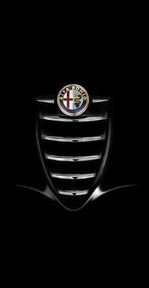.
Alfa Romeo Giulia TZ
Error creating thumbnail: Unable to save thumbnail to destination
| |
| Alfa Romeo Giulia TZ | |
|---|---|
| Race Car | |
| Category | World Sportscar Championship |
| Constructor | Alfa Romeo / Autodelta |
| Chassis | |
| Suspension (front) | |
| Suspension (rear) | |
| Engine | 1.6 litre Inline-4 |
| Power | N/A hp @ N/A rpm N/A lb-ft. of torque @ N/A rpm |
| Transmission | 5-speed manual |
| Fuel | |
| Tyres | |
| Notable entrants | |
| Notable drivers | |
| Debut | pending (if not yet introduced) |
| Races competed | |
| Race victories | |
| Constructors' Championships | |
| Drivers' Championships | |
| Pole positions | |
| Fastest laps | |
| Designer | Zagato |
The Alfa Romeo Giulia TZ (also known as the Alfa Romeo TZ or Tubolare Zagato) was a small sports car manufactured by Alfa Romeo from 1963 to 1967. It replaced the Giulietta SZ.
TZ
The original TZ, currently sometimes referenced as TZ1 to differ from later TZ2, was developed in together with Autodelta, a company led by Ex-Ferrari engineer Carlo Chiti. It featured a 1570 cc twin cam engine and other mechanical components shared with the Alfa Romeo Giulia and carried a 105 series chassis number<ref name="international-auto.com">Template:Citation/core{{#if:|}}</ref>, but was a purpose built sports racing car, with a tubular spaceframe chassis, light all-aluminum bodywork, disc brakes and independent suspension. The result was a lightweight coupé of only 650 kilograms (1,400 lb)<ref>David Owen, Great Marques Alfa Romeo, P62. "650 kg (1430 lb) ready for the track"</ref> and top speed of 134 miles per hour (216 km/h). The TZ was built both for street and racing trim, with the latest racing versions producing up to 160 brake horsepower (120 kW). Alfa's twin-spark cylinder head, as also used in the GTA, contributed to the speed of the TZ; the standard Giulia alloy block with wet steel liners was installed at an angle under the hood of the TZ to improve airflow.
Aiding the TZ in its quest for performance was the treatment of the rear bodywork. Incorporating the research of Dr. Wunibald Kamm, the TZ used a style called "coda tronca" in Italian, meaning "short tail.", otherwise known as the Kamm tail. The principle is that unless you are willing to incorporate an aircraft-like extended tail (not practical for an automobile), there is surprisingly little increase in drag by simply chopping the tail at an angle. Zagato had previously proved the success of this tail treatment in their "coda tronca" Sprint Zagato sports-racing cars, and it was a natural evolution to adapt this to the Giulia TZ.
The car debuted at the 1963 FISA Monza Cup, where TZs took the first four places in the prototype category. At the beginning of 1964 the TZ was homologated (100 units were needed for homologation) to the Gran Turismo category.<ref name="italiancar.net">Template:Citation/core{{#if:|}}</ref> After homologation it started to take more class wins in Europe and North-America. Of the first TZ, 112 units were built between 1963 and 1965.
Engine
- 1570 cc straight-4 DOHC 112 bhp (82 kW) at 6500 rpm (road trim), 160 bhp (118 kW) (race trim)
TZ2
In 1965 the car was updated with new fibreglass bodywork providing lower drag and reduced weight (620 kg). This new version was also made by Zagato. The new design was called the Alfa Romeo Giulia TZ2. The TZ2 was only built as racing version with Autodelta prepared twin plug, dry sump lubrication engine producing around 170 brake horsepower (130 kW). With this engine the car reached top speed of 152 miles per hour (245 km/h).<ref name="autozine.org">Template:Citation/core{{#if:|}}</ref> The rear window was also changed, now single unit rather than three part window in TZ. Development of TZ cars was stopped in the end of 1965, to make room for new GTA racing program. The TZ2 was built only 12 units.<ref name="carsfromitaly.net">Template:Citation/core{{#if:|}}</ref>Only built as limited amount these TZ models are quite collectibles nowadays, listed price around 150,000-200,000 US dollars.<ref name="sportscarmarket.com">Template:Citation/core{{#if:|}}</ref>
Engine
- 1570 cc straight-4 DOHC (twin plug) 170 bhp (125 kW) at 7000 rpm
Gallery
Complete Racing Results
(key) (results in bold indicate pole position)
| Year | Team | Engine | Tyres | Drivers | 1 | 2 | 3 | 4 | 5 | 6 | 7 | 8 | 9 | 10 | 11 | 12 | 13 | 14 | 15 | 16 | 17 | Points | WCC |
|---|---|---|---|---|---|---|---|---|---|---|---|---|---|---|---|---|---|---|---|---|---|---|---|
| YYYY | (Constructor) | (Engine) | (Tyre code) | ||||||||||||||||||||
Notes and references
See Also
External links
Please include any external sites that were used in collaborating this data, including manufacturer sites, in this section.
News and References
- Zagato reportedly to unveil new Alfa Romeo TZ3 Corsa concept at Villa d'Este
- Zagato Readying New Alfa Romeo TZ3 Corsa Concept for Villa D'Este Concours
Enthusiast Sites and Discussion Forums


